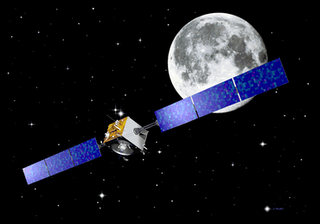India's first lunar mission ends after contact lost with mooncraft
 New Delhi - India declared Saturday that its first unmanned mission to the moon had ended after the national space agency lost contact with its lunar craft orbiting the moon.
New Delhi - India declared Saturday that its first unmanned mission to the moon had ended after the national space agency lost contact with its lunar craft orbiting the moon.
"The radio contact with Chandrayaan-1 was abruptly lost at 1.30 am Indian Standard Time (2000 GMT Friday) by the Deep Space Network (DSN)," the government-run Indian Space Research Organization(ISRO) said in a statement.
The probe which was expected to last two years came to an end 10 months after the launch but had met most of the objectives of the mission, ISRO scientists said.
Shortly after the statement, Chandrayaan-1 project director M Annadurai announced the end of the mission, the PTI news agency reported.
"The mission is definitely over. We have lost contact with the spacecraft," Annadurai told the PTI.
"It (Chandrayaan-1) has done its job technically...100 per cent. Scientifically also, it has done almost 90-95 per cent of its job," he added.
Scientists earlier told PTI that ISRO did not have "much hope" of continuing the probe as it did not know what was happening to the spacecraft and was unable to establish any communication.
News channels quoting ISRO sources said "connectivity revival" was rare and the Chandrayaan-1 was likely to crash into the moon as the agency was unable to send any command or receive any data from the orbital craft.
Chandrayaan-1, launched on October 22, was described as the cheapest moon mission ever, costing about 80 million dollars.
The mission catapulted India into the club of space-faring countries, which includes the United States, Russia, Europe, China and Japan. A moon probe was launched from the lunar spacecraft a month later, which successfully landed on the moon's surface.
Powered by a single solar panel, the lunar craft's tasks included taking high-resolution pictures of the moon, preparing a three- dimensional atlas of its near and far sides, doing chemical and mineralogical mapping and exploring for the presence of water in its polar regions.
There were 11 payloads onboard the 1,380 kilogramme Chandrayaan-1 - five designed and developed in India, three from the European Space Agency, one from Bulgaria and two from the United States.
"The spacecraft has completed 312 days in orbit, making over 3,400 orbits around the moon and providing a large volume of data from sophisticated sensors like terrain mapping camera, hyper-spectral imager, moon mineralogy mapper and so on, meeting most of the scientific objectives of the mission," the ISRO statement said.
In July, ISRO scientists had said that the probe had lost a sensor that helps guide the spacecraft which could bring the mission to a premature end before its projected two-year life span.
Scientists had responded with a makeshift solution, but some experiments had failed, the ISRO had said then.
The space agency chief Madhavan Nair had said the Chandrayaan-1 had worked excellently since its launch and the mission was a "100- per-cent success" as it had completed most of its objectives and collected "almost all the data" it was designed for.(dpa)